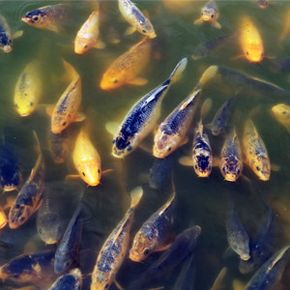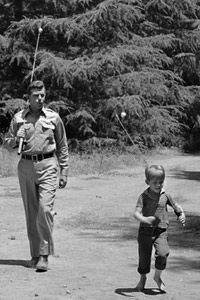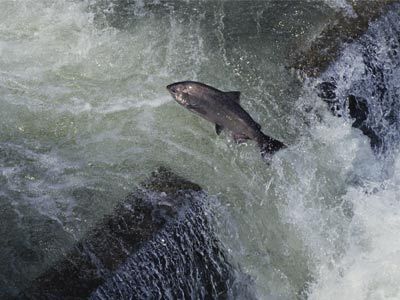When we go to the grocery store, we expect certain things to be there. If we have a midnight craving for popcorn and ice cream, then we want to be able to lay our hands on those items, pronto. We're not completely unreasonable, though -- in the event of a snowstorm, we might not be surprised to find the local market out of toilet paper and milk. But on a regular Tuesday afternoon, we'd better be able to find our favorite brand of cookies. That's why at night, almost like magical elves, store employees work to restock shelves. With nimble fingers, these elves fill freezer cases to the brim and stock the shelves so that it looks as if no one visited the store the day before. This task is crucial for maintaining customer loyalty; after all, hell hath no fury like a woman who can't get her toaster waffles.
Fish stocking works under the same principle, though of course the details are a little different. It's a fish management tool that works by releasing fish, usually bred in hatcheries, into the wild. Just like grocery items, it seems, the public has a demand for fish. Most often, the irate shoppers are replaced by angry anglers who want to be able to fish for sport. In other instances, environmentalists are the ones who want to restock empty waters to mitigate for past losses due to habitat disturbances or to restore historic populations. Sometimes, the customer is someone with a backyard pond, while at other times, the customer is a scientist who wants to conduct research.
Advertisement
The guidelines for stocking fish vary by location, with different countries and states having their own rules about which fish can be stocked where by whom. But whether it's a governmental office or a backyard enthusiast doing the stocking, careful planning is essential. After all, if a grocery store didn't plan its restocking schedule, the shelves might end up with no bread but hundreds of cans of peas. Imagine if two shoppers got into a brawl over that last loaf of bread, and you can start to imagine what might happen in an inappropriately planned fish stocking. While the shoppers may eventually settle the matter, the fish would die.
So what questions need to be considered to keep those fish alive? We'll take a look at the fish stocking process on the next page.
Advertisement





